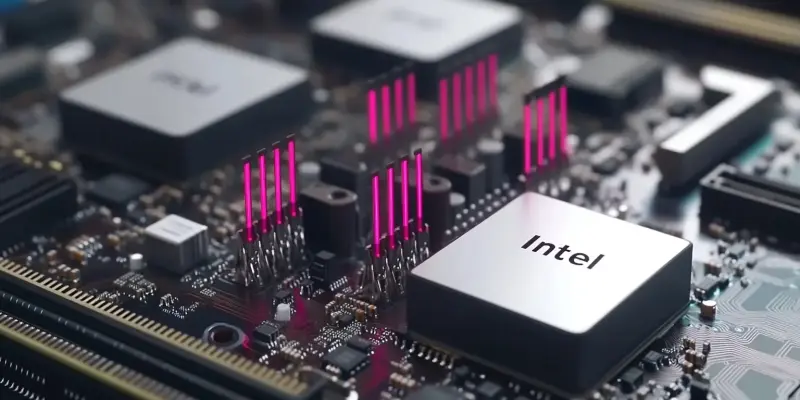Intel’s Nova Lake CPUs, recently spotted in shipping manifests, signal a promising development cycle, hinting at significant advancements in Intel’s mainstream consumer CPU platforms. Set for release in 2026, Nova Lake is intended to succeed the Panther Lake platform for mobility and the Arrow Lake platform for desktops, assuming there are no further desktop releases post-Core Ultra 200S series. This development reflects Intel’s ongoing efforts to maintain its competitive edge in the CPU market by continuously evolving its technology and addressing consumer demands.
Key Developments in Intel’s Nova Lake
Targeted Release and Advancements
The Panther Lake platform, preceding Nova Lake, is slated for mass production in the latter half of 2025 and marks Intel’s first consumer platform using the advanced 18A process node. Reflecting the trajectory set by Meteor Lake, it will predominantly emphasize mobile technology but may still see a desktop release similar to the “PS” series for Edge platforms. While Panther Lake sets the stage for these innovations, Nova Lake is anticipated to leverage either Intel’s 14A process node or TSMC’s 2nm process node, continuing a strategic trend of potentially outsourcing specific components to TSMC, as seen with Meteor and Arrow Lake.
The emergence of a test chip in the shipment manifest suggests active and smooth development for Nova Lake, essential for its designated successor, Razor Lake-S. Unlike previous iterations such as Lunar Lake, neither Panther Lake nor Nova Lake will integrate on-package memory designs. These platforms highlight Intel’s commitment to pushing the boundaries of core and thread counts, expanding memory support from DDR4 to DDR5, and advancing PCIe standards from Gen 5.0 to potentially Gen 6.0 by the time Nova Lake debuts, promising substantial performance improvements and energy efficiency for consumers.
Process Nodes and Production Plans
With the transition to the 18A process node in Panther Lake, Intel is poised to demonstrate considerable improvements in performance and power efficiency, aligning with industry demands for faster and more energy-efficient CPUs. The production shift is notable, marking a significant milestone in Intel’s roadmap and positioning the company strongly against competitors. Intel’s strategy to potentially leverage TSMC’s 2nm process node or its internal 14A technology with Nova Lake reinforces the company’s flexible approach to manufacturing, ensuring that it can tap into the best available technology to deliver superior products to the market.
The ongoing development of Nova Lake is crucial, not only as a successor to Panther Lake but also as a foundational step towards the subsequent Razor Lake-S. This progression emphasizes Intel’s dedication to long-term planning and continuous evolution in its CPU platforms. By not incorporating on-package memory designs in Nova Lake, Intel is focusing on other architectural enhancements that could offer scalable performance benefits and reduced latency, addressing the growing computational demands of modern applications and consumer expectations.
Future Platform Integrations and Innovations
Memory and PCIe Advancements
One of the critical aspects of the forthcoming CPU platforms, including the Panther Lake and Nova Lake, is the ongoing evolution in memory support and PCIe standards. The transition from DDR4 to DDR5 memory support is expected to bring considerable improvements in data transfer rates and overall system performance, catering to the increasing requirements of high-performance computing applications. Moreover, the anticipated shift from PCIe Gen 5.0 to Gen 6.0 reflects Intel’s forward-looking approach in ensuring that its platforms remain compatible with the latest peripheral devices, offering superior bandwidth and reducing bottlenecks in data transfer processes.
As the industry continues to demand higher performance and efficiency, Intel’s proactive approach in integrating advanced memory technologies and PCIe standards will likely play a pivotal role in maintaining its leadership in the CPU market. The enhancements in memory support and PCIe standards will not only benefit desktop users but also have a significant impact on mobile computing, where energy efficiency and performance are critical factors. Intel’s strategic decisions will thus cater to a broad spectrum of consumer needs, reinforcing its commitment to innovation and customer satisfaction.
Core/Thread Counts and Architectural Enhancements
Intel’s Nova Lake CPUs, recently unveiled in shipping manifests, indicate a promising development cycle, suggesting noteworthy advancements in Intel’s mainstream consumer CPU platforms. Anticipated for release in 2026, Nova Lake is designed to follow the Panther Lake platform for mobile devices and the Arrow Lake platform for desktops. This assumes there are no additional desktop releases after the Core Ultra 200S series. This strategic move showcases Intel’s commitment to maintaining its competitive position in the CPU market. They aim to achieve this by constantly upgrading their technology to meet and exceed consumer expectations and demands.
Intel’s forward-looking approach with Nova Lake reflects their dedication to staying ahead in the ever-evolving tech landscape. By focusing on innovative solutions and efficiency improvements, Intel continues to address the needs of both everyday users and tech enthusiasts. This upcoming release signals not just an incremental update but potentially a significant leap in performance and capabilities, underscoring Intel’s role as a key player in driving forward the future of computing technology.

